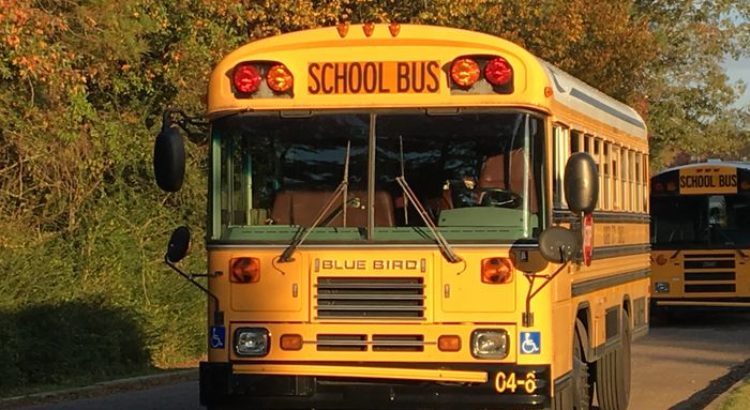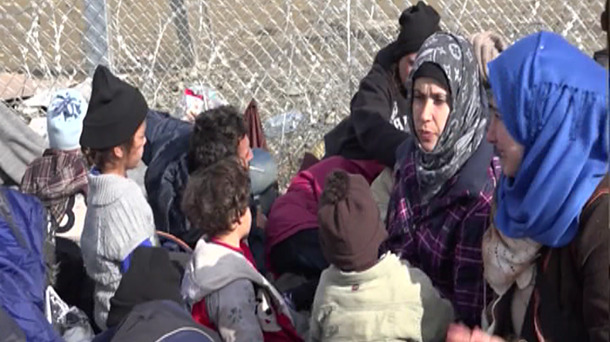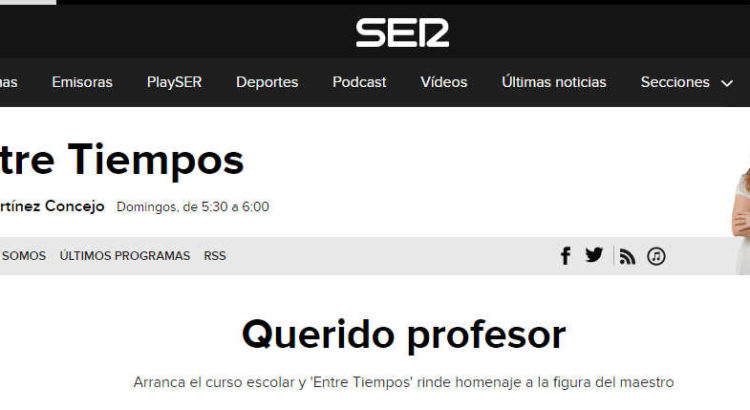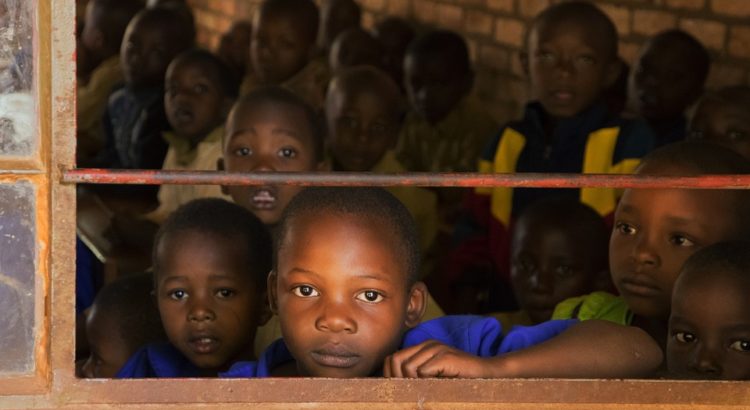MILWAUKEE — Today, U.S. Secretary of Education Betsy DeVos began her 2019 Back-to-School Tour in Milwaukee, Wisconsin, the birthplace of modern education freedom. In a speech at St. Marcus Lutheran School, Sec. DeVos noted the incredible progress the education freedom movement has made since visionary leaders like Annette «Polly» Williams and Howard Fuller ignited the parental choice movement 30 years ago but acknowledged there is still much work left to be done. Secretary DeVos urged leaders across the country to embrace the Administration’s education freedom agenda so that every student in America can have unlimited access to the education that best helps them reach their fullest potential.
Secretary DeVos said, «Now is the time to ignite a new birth of freedom for all of America’s students. We have a bold plan to do just that—an American education freedom agenda. The freedom to learn. The freedom to grow. The freedom to advance. The freedom to pursue the education that works for you. Students in control of their pathway to a successful education, career, and life. Families in control of how, when, and where their students will learn best. Teachers in control of their classrooms and their careers. States and communities—not Washington, D.C.—in control of local decisions.»
QUOTES TO NOTE:
«Students: We’re here because of you—and for you. In fact, everything about education should be focused solely on you. After all, as a nation, we’ve committed to help each student prepare for the future. Some people confuse that as a commitment to a building, to a system, or to a particular way of learning. But your education must be about who you are and all that you see for yourself, for your family, for your community, and importantly for our country.»
***
«There are still too many [students] who don’t know how to read. There are still too many who don’t know how to add, subtract, divide, or multiply. And too many have no power to do anything about it. That’s because the education cabal puts other issues above what’s right for students. Mixed-up priorities are borne out in the numbers. Consider that American taxpayers spend—on average— about $13,000 per student, per year. With an average class size of 21 students, that adds up to $273,000 per classroom, per year. We know the average classroom teacher makes about $60,000 annually. So, where does the rest of the money go? More than $200,000 per classroom and teachers are still buying school supplies out of their pockets.
«Well, here’s the dirty little secret: it’s to highly paid administrators, coordinators, consultants, assistant principals, assistant superintendents… layers and layers of bureaucracy. The growth in non-instructional school staff has increased nine times faster than student enrollment growth.»
«We know American families want more control and more options when it comes to education. That’s why every poll shows growing, bipartisan support for education freedom. And for every approach to education freedom—public charter schools, vouchers, education savings accounts, tax credit scholarships—support crosses ethnic and political lines. Education freedom policies work. We just need more of them. Many more.»
«Think of Education Freedom Scholarships as keys to unlocking the opportunities you want to pursue. This isn’t about picking a school building. That’s thinking too small. Instead, think about unleashing thousands of not yet imagined ways for students of all ages to learn.»
SECRETARY DEVOS’ REMARKS AS PREPARED FOR DELIVERY:
Thanks, everyone, for letting me join you today.
It’s hard to see summer end. But «back to school» season is an exciting time of year. I think it’s useful, as we begin any new season, to reflect on where we’ve been, where we are, and importantly, where we want to go.
Students, we’re here because of you—and for you. In fact, everything about education should be focused solely on you. After all, as a nation, we’ve committed to help each student prepare for the future. Some people confuse that as a commitment to a building, to a system, or to a particular way of learning.
But your education must be about who you are and all that you see for yourself, for your family, for your community, and importantly for our country.
That’s what I like about St. Marcus. This school community is built around giving students what they need.
Something important is happening here. You’re doing things differently, and as a result, students who learn here far and away outperform their peers.
I think that has to do with how you are so intentional about cultivating the relationship between student, parent, and teacher.
You call it a covenant—indeed, a sacred promise—to do everything in your power «to ensure academic success.» Your students, your families, and your great teachers choose to commit to this covenant. You each acknowledge everyone has a role to play, and that you all depend on one another.
This should be commonly understood. Obvious. Normal. But we know it all too often isn’t, and it wasn’t always this way in Milwaukee.
Parents, teachers: you remember the problems you and your students faced years ago. Fewer than 60 percent of students finished high school.
Students’ confidence crushed, teachers frustrated, and parents heartbroken. Everyone wanted something different. Something better.
Then, along came «Polly.»
You all know the «mother» of our movement, Annette «Polly» Williams. She wanted better for her own children, and for children in her own community. She couldn’t bear to see her city’s students struggling, so she did something about it.
Polly worked with anyone and everyone to help students—and pushed back against anyone who didn’t. She and civil rights icon Howard Fuller fought their own political party, the NAACP, and the unions. And they won when Governor Tommy Thompson, who was from a different political party, established the Milwaukee Parental Choice program.
They all put politics aside and did what was right for kids.
They believed that students matter. It didn’t matter who their parents were, nor where they lived, nor what color they were, or who they knew, or how much they had in their pockets. All that mattered was that students were students.
Polly’s will to win 30 years ago was the first of many victories for students and families. At first, the program was small, able to empower only a few of Milwaukee’s parents. But as demand expanded, so did the program. Today, the Parental Choice program and others like it serve about 37,000 students statewide, including almost every student here at St. Marcus.
You wouldn’t be here—and I wouldn’t be here—if not for the courage of Polly, Howard, and the parents who joined them in the fight.
So, I’ve come to Milwaukee—the birthplace of education freedom—to stand on the shoulders of giants and say:
Now is the time to ignite a new birth of freedom for all of America’s students.
We have a bold plan to do just that—an American education freedom agenda.
The freedom to learn. The freedom to grow. The freedom to advance.
The freedom to pursue the education that works for you.
Students in control of their pathway to a successful education, career, and life.
Families in control of how, when, and where their students will learn best.
Teachers in control of their classrooms and their careers.
States and communities—not Washington, D.C.—in control of local decisions.
Why is this freedom so desperately needed today?
Because what we’re doing—what we’ve been doing—isn’t working.
Open up our Nation’s Report Card and you’ll see what I mean. Two in three of our Nation’s 8th graders aren’t learning what they need to be prepared for their futures.
And consider this: The United States ranks 24th in reading, 25th in science, and 40th in math in the world. Think about it. These statistics have very real consequences for our future.
For one, students can’t pass military entrance exams. Nearly one in four Americans who want to serve are turned away because they fail the Army’s basic test.
I also think of my recent visit to an Indiana prison. The warden told me that the biggest problem there is not violence or discipline. It’s illiteracy.
Then there’s the story of a father whose son, a recent high school graduate, was honored in the local newspaper. Dad’s pride turned to disappointment after he discovered his son couldn’t read or comprehend the article. So, dad marched over to the high school principal’s office with his son and newspaper in tow and asked his son to read the article to the principal. He couldn’t. Then the father pointedly asked the principal how he could’ve graduated his son—or anyone—who can’t read.
There are still too many who don’t know how to read. There are still too many who don’t know how to add, subtract, divide, or multiply. And too many have no power to do anything about it.
That’s because the education cabal puts other issues above what’s right for students.
Mixed-up priorities are borne out in the numbers.
Consider that American taxpayers spend—on average— about $13,000 per student, per year. With an average class size of 21 students, that adds up to $273,000 per classroom, per year. We know the average classroom teacher makes about $60,000 annually.
So, where does the rest of the money go? More than $200,000 per classroom and teachers are still buying school supplies out of their pockets.
Well, here’s the dirty little secret: it’s to highly paid administrators, coordinators, consultants, assistant principals, assistant superintendents—layers and layers of bureaucracy. The growth in non-instructional school staff has increased nine times faster than student enrollment growth.
It just doesn’t add up.
And though Federal taxpayer spending is less than 9 percent of total education spending, over the past 40 years taxpayers have spent well-over one trillion dollars at the Federal level alone trying to improve student outcomes. And the research shows almost no progress in closing the achievement gap.
Yet, there are many in Washington still arguing to spend more—way more—doing more of the same things.
Our sole focus should be on how to do better—starting today.
Doing better begins by expanding freedom.
Let me paint a picture of what that might mean.
Students, education freedom for you could look like this: If you need more time to learn a concept or lesson, you get it. If you need less time, you can move on. If you want to study a language or a subject that your school building doesn’t offer, you can learn it somewhere else. If you don’t like to study behind a desk and learn better in a lab or in a garden or between skyscrapers, you can do that. If you want hands-on experiences to help decide your learning pathway, you can have those. You should be free to learn in any way and in any place that works for you.
Teachers, education freedom for you could look like this: If you want to try something new in your classroom that you think will better help your students, you can. If you want to mentor other teachers, you can do that, and you should be rewarded for it. If you want to control your professional development and career path, you’d have the power to do so. You should be free to teach in any way and in any place that works for you and your students—and you should be properly paid for your success.
Parents, education freedom for you could look like this: If the government-assigned school isn’t working for your child, you can take him or her anywhere else. And if your school is working for your child, you can stay put. Another parent’s freedom to make a choice doesn’t mean you have to make the same choice. If you want to homeschool your children for part of the week and send them to a classical academy the rest of the week, you can do that. If one type of learning or instruction is best for your son and another is better for your daughter, you have the flexibility to make those choices. If a school closer to your work is a better fit for your family, that’s your choice. You should be free to make the decisions that work best for your children and your family.
We know American families want more control and more options when it comes to education. That’s why every poll shows growing, bipartisan support for education freedom. And for every approach to education freedom—public charter schools, vouchers, education savings accounts, tax credit scholarships—support crosses ethnic and political lines.
Education freedom policies work. We just need more of them. Many more.
That’s why this Administration has put forward the most transformative idea for American education in decades: Education Freedom Scholarships. I hope you’ve seen our proposal.
I don’t want to dive into the details here; you can visit our website for those. What I do want to talk about is what Education Freedom Scholarships will mean.
For the student who wants to gain valuable career skills by apprenticing, she can use an Education Freedom Scholarship to learn her craft while learning her core subjects.
For the student who is bullied at his government-assigned school, he can use an Education Freedom Scholarship to learn elsewhere.
To the student who wants to get a head start on college credit while completing her high school studies, she can use an Education Freedom Scholarship to do just that.
For the single mom who works three jobs just to make ends meet while her kid is trapped in a school that’s chronically failing him, she can use an Education Freedom Scholarship to give her son opportunities for a better life.
Think of Education Freedom Scholarships as keys to unlocking the opportunities you want to pursue.
This isn’t about picking a school building. That’s thinking too small. Instead, think about unleashing thousands of not yet imagined ways for students of all ages to learn.
On last year’s Back to School tour, I saw some great examples. This year, we’ll head across the Midwest to see more innovations and options that are meeting kids’ needs.
Students, you are our future. Nothing should limit your success, and nothing should be off-limits if it helps you learn and grow.
I loved learning about Terrance, a St. Marcus grad.
His father died when he was young, but his mother Deanna was not about to let that derail TJ’s bright future. He did well in school but wasn’t being challenged and learning behind a desk all day didn’t work for him. So, his mom used the Milwaukee Parental Choice Program to enroll TJ here at St. Marcus. And, for the first time, someone at school asked him what he was passionate about learning.
TJ is a food artist. He wanted to know more about making his interest a profession. So, St. Marcus focused his studies around the culinary arts. He even prepared a few meals for his classmates using food grown right here at St. Marcus. And he’s interning at a renowned local restaurant where he continues to develop his culinary skills.
His mom believes that because of Milwaukee’s voucher program, because of St. Marcus, because he was free to learn in ways that worked for him, TJ found his purpose.
All of America’s mothers and fathers want that for their sons and daughters. All of America’s families want more options, more choices, more freedom.
Everyone—no matter their age—needs the freedom to learn, to grow, to pursue their passions, to use their talents, and to achieve their fullest potential.
In every student I meet across the country I am filled with great hope. Ahead there is daylight. Here’s a glimpse into the future: American education is bustling. It’s dynamic. It’s innovative. Adaptive. Personalized. Relevant. And our students are number one in the world.
So, let’s recommit ourselves to the cause of education freedom—right here where it all began. Standing shoulder to shoulder with the first freedom students, let’s resolve together—form our own covenant—to finish the work that was started here more than 30 years ago.
Thank you all. May God bless America and our Nation’s future, her students.
Fuente de la Información: https://www.ed.gov/news/press-releases/sec-devos-calls-new-birth-freedom-milwaukee-birthplace-education-freedom-kick-2019-back-school-tour












 Users Today : 185
Users Today : 185 Total Users : 35459780
Total Users : 35459780 Views Today : 345
Views Today : 345 Total views : 3418317
Total views : 3418317